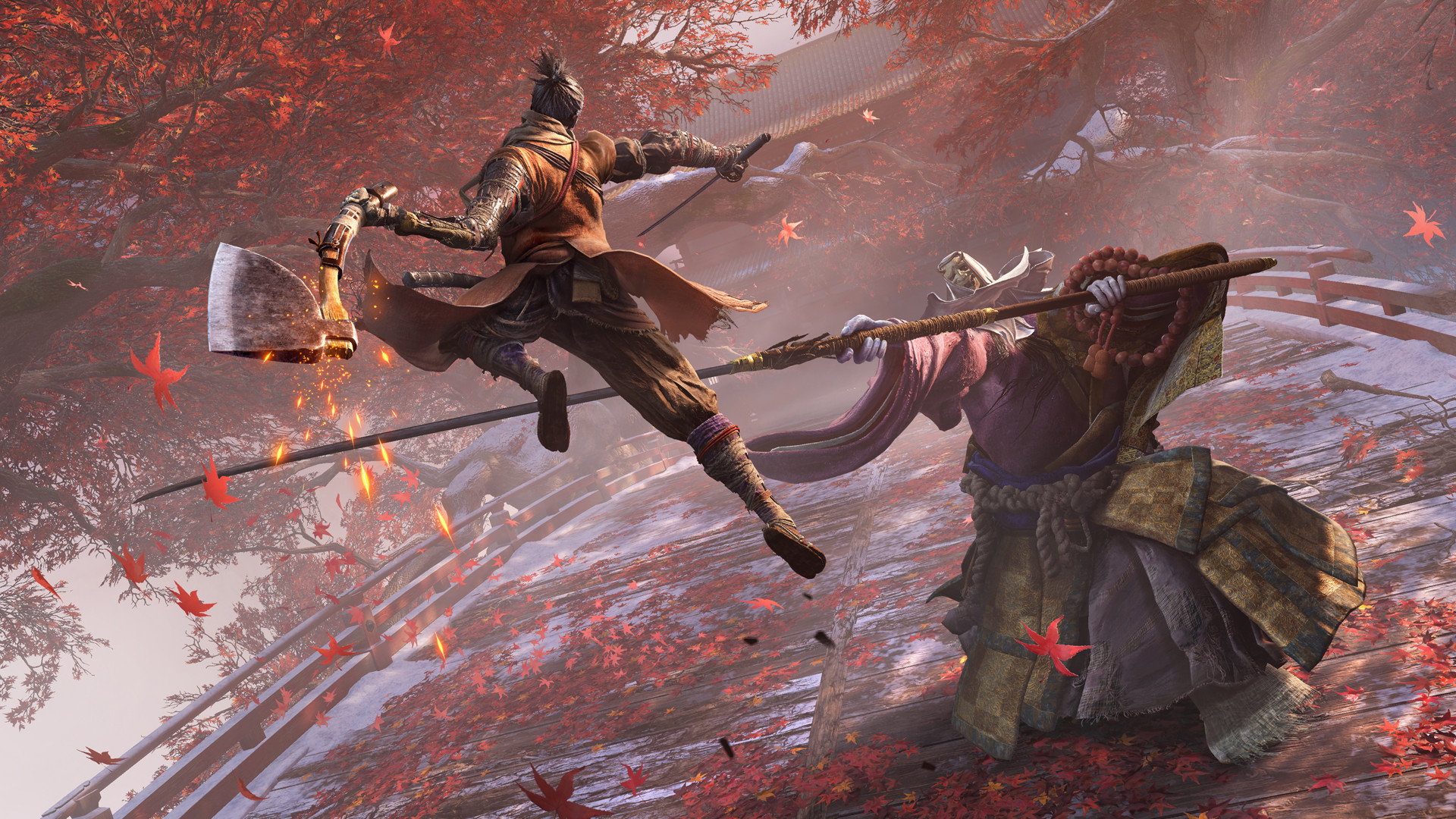I’m killing the same man repeatedly to get back into Sekiro, and now I feel guilty
Hanbei the Undying really is a selfless sort.

Last week a Sekiro player inspired me. Not content with just playing the game through and then again on even more punishing New Game Plus runs, someone decided to replace all the enemies in the game with the final boss, Isshin Ashina. It’s been a week and I still haven’t got over that. It also motivated me to get back into the game: as with the two other FromSoftware games I’ve played, I reached roughly the midway point in Sekiro, hit a roadblock, and fell off it.
I’ve still never returned to Dark Souls or Dark Souls 3, but Kahei_X has wrenched me from my shinobi slumber. I found myself reevaluating the Sekiro boss fight that stumped me: the second fight against the Guardian Ape. Admittedly I didn’t go into my first few attempts with the best mindset. But in my defence, I’d already killed the damn dirty ape in the Sunken Valley and now I have to fight it again with another gargantuan monkey at the same time.
I put my katana down for the best part of a year, mainly because I felt more intimidated by the prospect of trying again as time wore on. Sekiro is the ultimate test of your reflexes as you fight on what often feels like the very brink of death. It demands total, undivided focus. To master it you must train your muscle memory to instinctively dodge, deflect, and strike. Returning to the game felt like an insurmountable challenge. That was until I remembered a poor undead bloke in the early hub area—he changed everything.
Now I’ve committed to resuming the way of the ninja, I realise I need to start slow. I can’t just rush into the Guardian Ape’s sword range. Instead I pay Hanbei the Undying a visit—an undead NPC found in a clearing near the Dilapidated Temple.
The first time you sidle up to say hello he invites you to fight him and it’s… anticlimactic. He presents little more threat than your average grunt, and you only need to get one deathblow to defeat him. it’s a strangely simple scrap. That’s until he rises again, pulled up languidly as if by a puppeteer’s string. Cursed with undeath, poor Hanbei is essentially a sentient practice dummy, and he’s exactly what I need right now.
From masterclasses on dodging and attacking to getting to grips with the immensely useful Mikiri Counter, you can practice with Hanbei as much as you like. And every time you kill him he just gets up. I start to feel pretty bad as I use this husk of a man to improve my skills, like a particularly nimble parasite. But I can’t think about that right now, I have monsters to prepare for.

Arguably the most important move in Sekiro is deflect. By timing your block just right you can rinse through your opponent’s posture and work towards that all-important deathblow. Being comfortable with Step Dodge is essential when fighting multiple opponents at once, but nailing a deflect on the headless monkey’s overhand smash move is the best way to wail on its health.
Keep up to date with the most important stories and the best deals, as picked by the PC Gamer team.
Practice with my loyal living dummy helped me rediscover that focus and skill to finally send the damn ape packing. Now the bosses are tumbling: the Corrupted Monk, O’Rin of the Water, and Lone Shadow Vilehand fell pretty quickly after, and now I’m back in the groove again. Now hopefully I can stick this intoxicating experience out to the end. So thank you Hanbei the Undying, I couldn’t have done it without you.
UK — After collecting and devouring piles of print gaming guides in his younger days, Harry has been creating 21st century versions for the past five years as Guides Writer at PCGamesN and Guides Editor at PC Gamer. He has also produced features, reviews, and even more guides for Trusted Reviews, TechRadar and Top Ten Reviews. He's been playing and picking apart PC games for over two decades, from hazy memories of what was probably a Snake knock-off on his first rig when he was seven to producing informative guides on football simulators, open-world role-playing games, and shooters today. So many by now he steadfastly refuses to convey information unless it’s in clickable online form.


